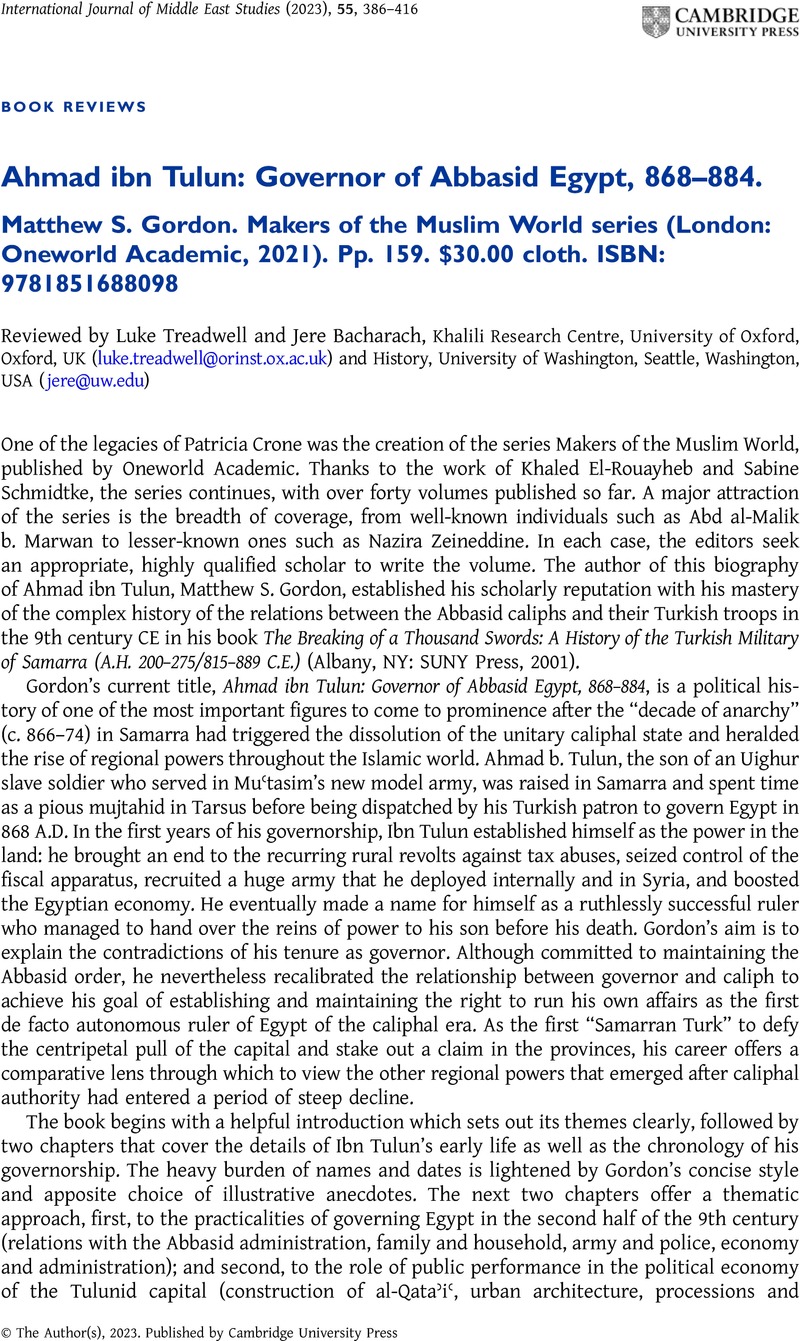No CrossRef data available.
Article contents
Ahmad ibn Tulun: Governor of Abbasid Egypt, 868–884. Matthew S. Gordon. Makers of the Muslim World series (London: Oneworld Academic, 2021). Pp. 159. $30.00 cloth. ISBN: 9781851688098
Review products
Ahmad ibn Tulun: Governor of Abbasid Egypt, 868–884. Matthew S. Gordon. Makers of the Muslim World series (London: Oneworld Academic, 2021). Pp. 159. $30.00 cloth. ISBN: 9781851688098
Published online by Cambridge University Press: 04 May 2023
Abstract
An abstract is not available for this content so a preview has been provided. Please use the Get access link above for information on how to access this content.

Information
- Type
- Book Review
- Information
- Copyright
- Copyright © The Author(s), 2023. Published by Cambridge University Press


